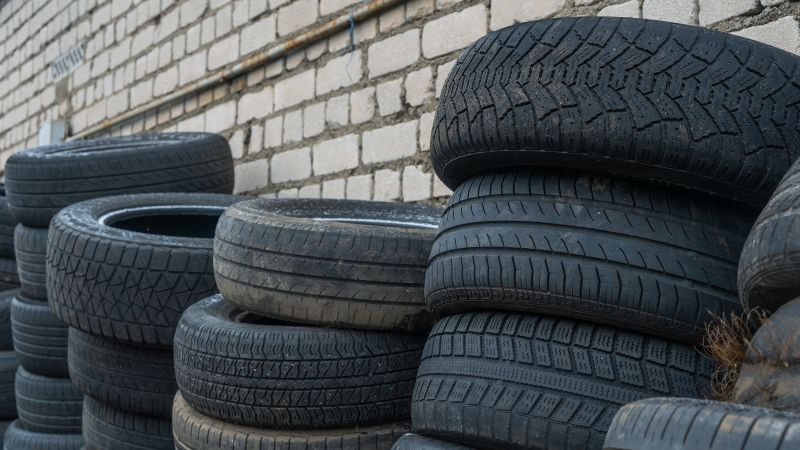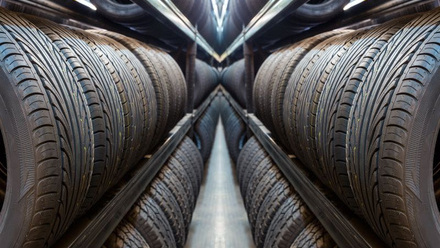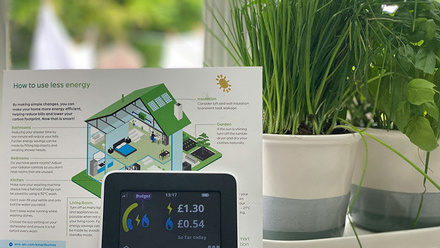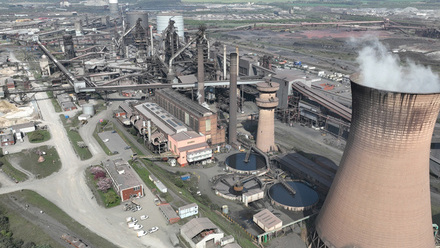Chemical process to repurpose rubber waste
A technique to transform discarded rubber tyres into precursors for epoxy resins.

This offers an alternative to pyrolysis that chemically recycles rubber through high-temperature decomposition, generating harmful by-products like benzene and dioxins.
Rubber is composed of polymers cross-linked into a 3D network, making these materials difficult to recycle.
Researchers at the University of North Carolina-Chapel Hill, USA, explain how traditional methods for breaking down rubber focus on two main approaches. De-vulcanisation, which breaks sulphur cross-links but weakens the polymer’s mechanical properties, and cleavage of the polymer backbones using oxidative or catalytic methods, which often result in complex, low-value by-products.
'Our research seeks to overcome these challenges by developing a method that breaks down rubber into functional materials that possess value even as a mixture,' says Assistant Professor Aleksandr V. Zhukhovitskiy.
They used different kinds of rubber, including post-consumer crushed rubber based on polyisoprene. The researchers claim to have achieved their results at 35-50°C in aqueous media.
The ability to break down the rubber and turn it into a soluble material with amine groups that could be used to manufacture materials like epoxy resins in six hours is reliant on the chemical reaction.
In a test with a model polymer, they reduced its molecular weight from 58,100g/mol to about 400g/mol.
Zhukhovitskiy’s describes how they came to 'the realisation that cationic aza-Cope rearrangements of aminated diene polymers would effectively transpose transiently generated side-chain iminium groups to the backbone of the polymers, where their hydrolysis would cleave the chains.
'Furthermore, cationic aza-Cope rearrangements are well-known to be highly efficient and to proceed at moderate temperatures in aqueous media. Notably, the deconstruction chemistry is inherently reversible, and we hypothesise that the equilibrium is driven toward products by the increase in entropy through the deconstruction process'.
The epoxy resins tested reportedly had strengths of ~1MPa. Although Zhukhovitskiy notes that value will vary as a function of the initial rubber composition, level of amine incorporation and structure of the epoxide-containing building block.
A commercial phospholene oxide (CAS:707-61-9) was a key catalyst to synthesise the sulphur diimide reagent for the amination of rubber. (S)-(+)-10-camphorsulphonic acid catalyses the aza-Cope rearrangement.
Following the reaction, some components ended up being incorporated into the polymers, and some were converted into by-products like CO₂, isobutylene, SO₂ and pyridinium chloride.
At the scale they were working at, the scientists did not attempt to capture and further break down any of the by-products.
The researchers have evaluated the process using the Environmental Impact Factor (E-factor) – a measure of waste generated relative to the product yield.
The overall complete E-factor is 1,469.3, and the simple E-factor is 35.7. The larger value reflects a scenario where solvents used in the process are not recycled, and the smaller value assumes complete solvent recycling.
The team is exploring greener solvent systems and alternative reaction conditions to reduce waste generation.
They are currently looking for funding to transition research from laboratory scale to multi-kilogramme scale. The team believes this is possible with further process optimisation in collaboration with chemical engineers.








